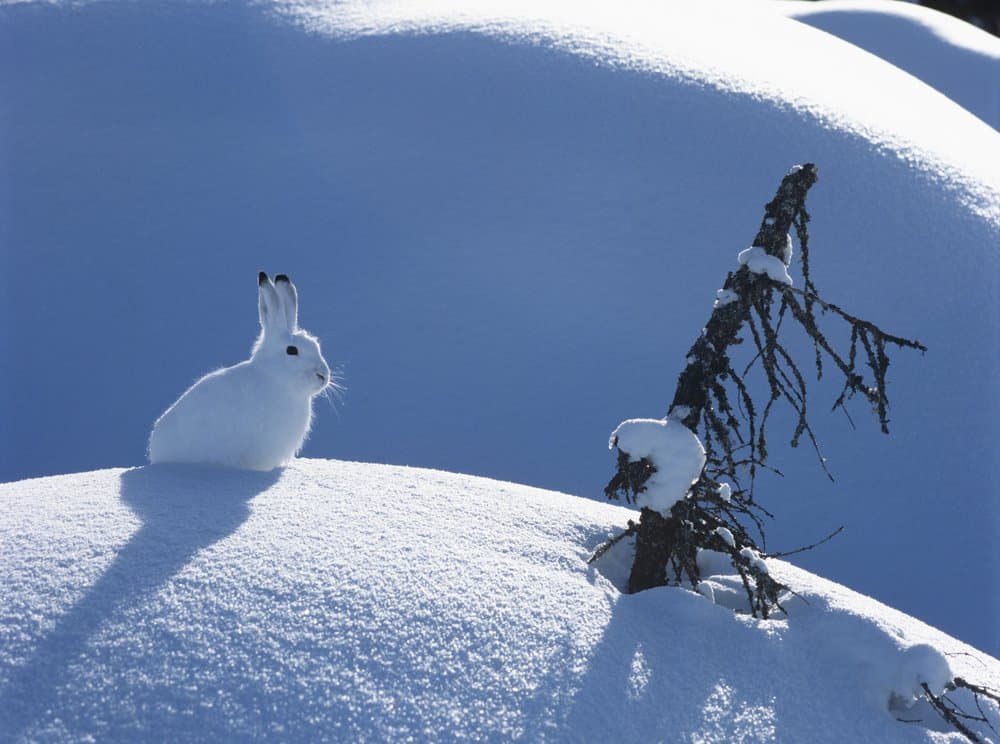
The post Surviving Nature’s Freezers: Meet the Animals Thriving in Earth’s Polar Regions appeared first on A-Z Animals.
The polar regions are the coldest places on Earth. During the summer, the poles receive 24 hours of sunlight, but during the winter the sun is rarely visible. Animals that inhabit nature’s freezers have evolved and adapted to living in the cold, and often have a thick layer of fat or blubber that keeps them warm. Numerous species live in these hostile conditions. Many, however, are threatened by habitat loss, a symptom of climate change, with spring melt happening earlier and faster each year. Continue reading to discover the animals that call the polar regions home.
Arctic Hare

This arctic hair blends well with its surroundings, winter and summer, when its coat will turn grayish-brown.
©sirtravelalot/Shutterstock.com
Lepus arcticus, commonly the arctic hare, is native to the most northern regions of North America. They are found principally in the arctic tundra. These hardy little critters have thick fur that not only keeps them warm but also changes colors with the seasons, keeping them camouflaged as well. Arctic hares are agile and easily maneuver the rocky terrain of the tundra. Their diet is primarily herbivorous, consisting of grass and moss.
Arctic Fox
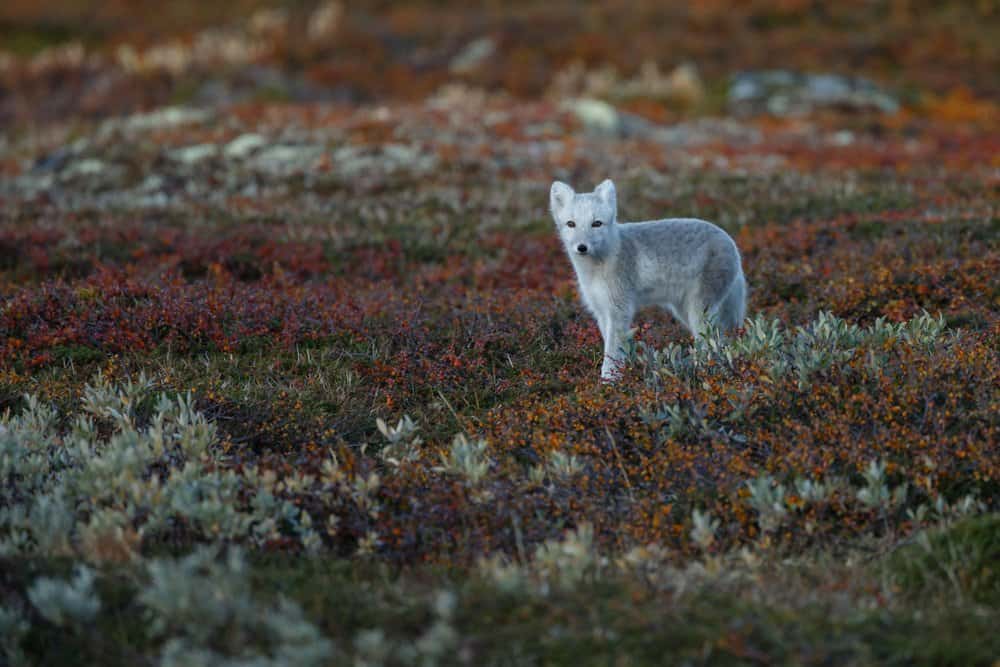
©Menno Schaefer/Shutterstock.com
Arctic foxes (Vulpes lagopus), known for their excellent hunting skills are small, adaptable mammals found in the harsh conditions of the Arctic tundra. They are well-equipped for surviving extreme cold, with a dense, insulating coat that changes color with the season, white in winter to blend in with snow and brown or gray during summer to match the rocky landscape. These foxes are opportunistic feeders whose diet consists of lemmings birds, and fish.
Arctic Wolf
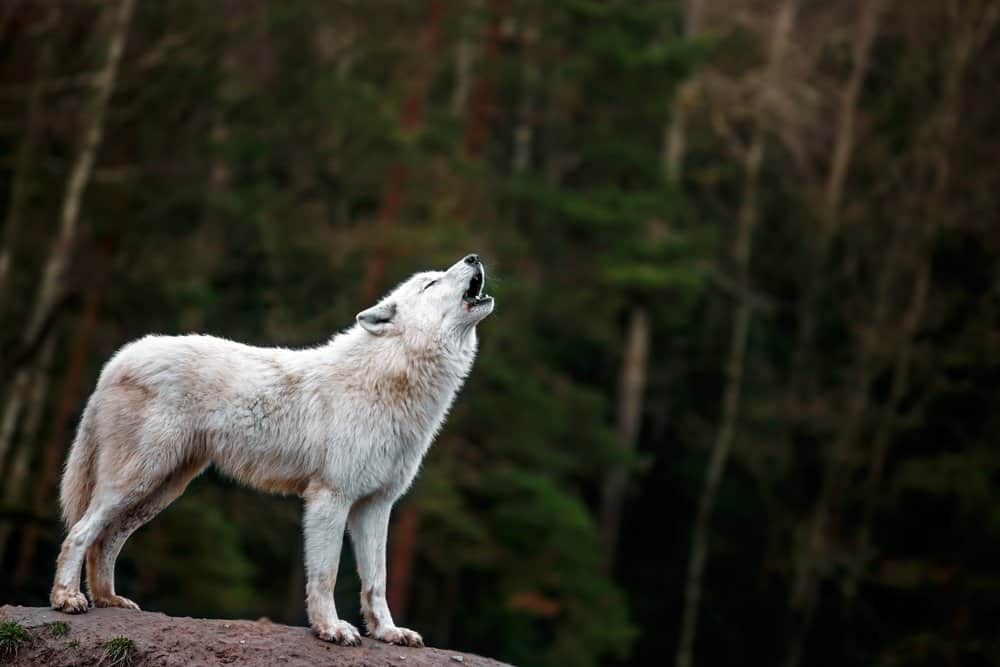
©Josef_Svoboda/Shutterstock.com
Canus Lupus Arcticus, the Arctic wolf, is a subspecies of the gray wolf found in Canada and Greenland. coat consists of two layers. The Arctic wolf has evolved to withstand the harsh conditions of their home territory. From lower metabolic rates, which conserve energy in extreme cold when food is scarce, to a thick, two-layer fur coat. The outer layer repels snow and water, while their undercoat provides the insulation that keeps them warm. Their fur changes colors seasonally to help them blend in.
Emperor Penguin
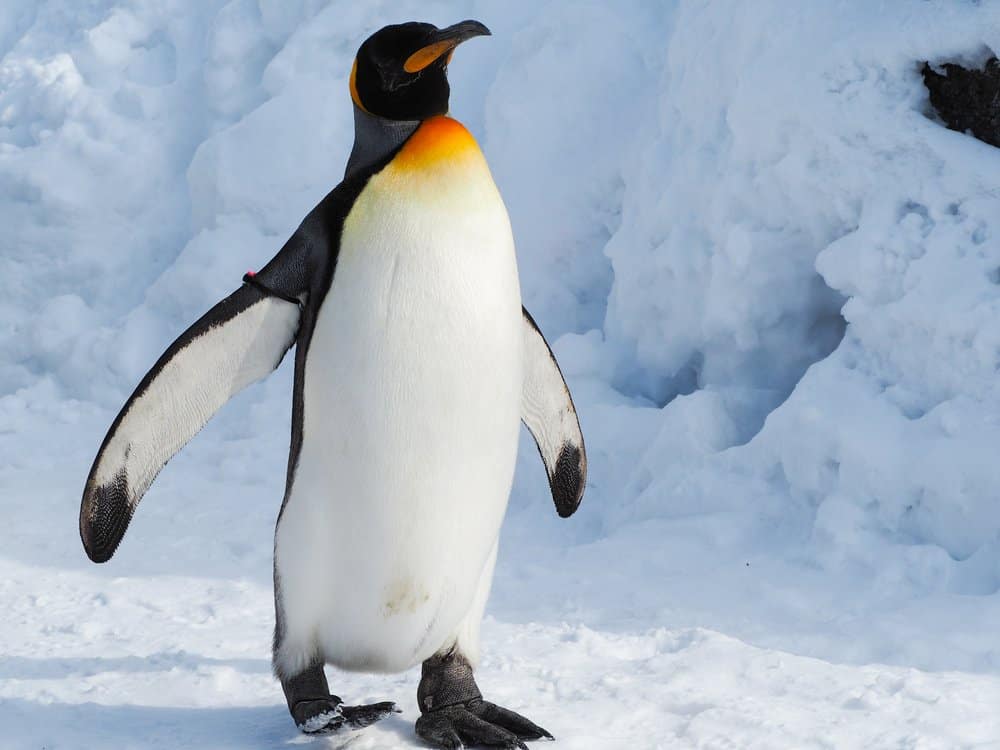
The emperor penguin lives in Antarctica and is the largest species of penguin in the world.
©Joey_Danuphol/Shutterstock.com
Native to Antarctica, the emperor penguin (Aptenodytes forsteri) is the largest species of penguin. Recognized by their black and white plumage and adorable behavior, emperor penguins grow to four feet and weigh up to 90 pounds. To stay warm, emperor penguins will huddle in large groups. Emperor penguins are excellent swimmers and will dive to incredible depths (1,640 feet/500 meters) for food, including fish, krill, and squid. Interestingly, male emperor penguins incubate the eggs while females go in search of food.
Orca
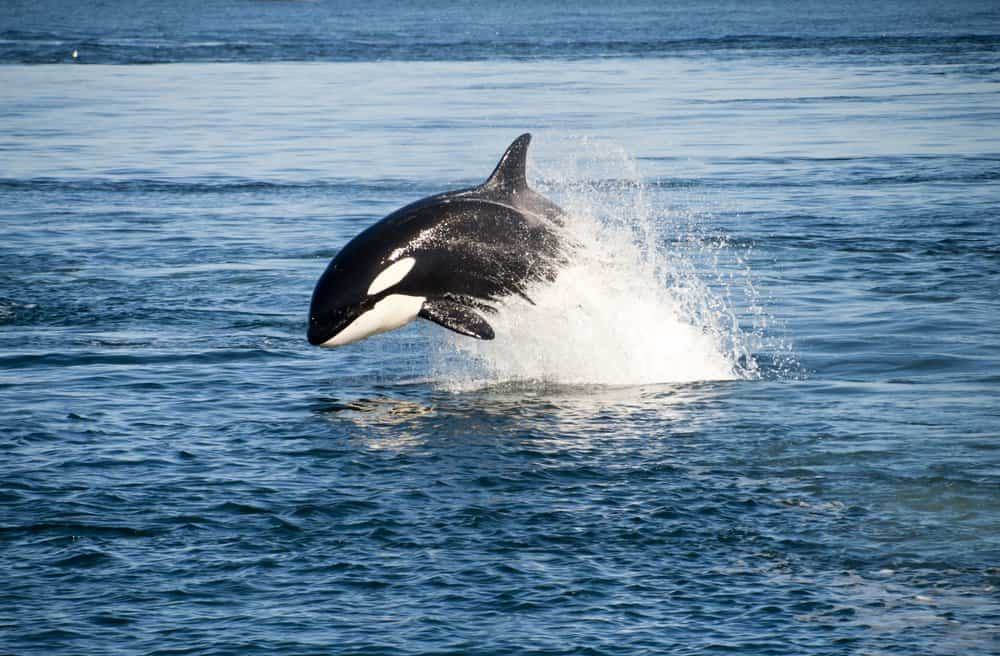
©qingqing/Shutterstock.com
Killer whales (Orcinus orca) live in oceans all over the world but are especially plentiful in the frigid waters surrounding the Poles, particularly off the coasts of Alaska, Canada, Norway, and Iceland. A thick layer of blubber (fat) acts as insulation, keeping them warm. The extra fat also serves as energy reserves for when food is scarce.
Lemming
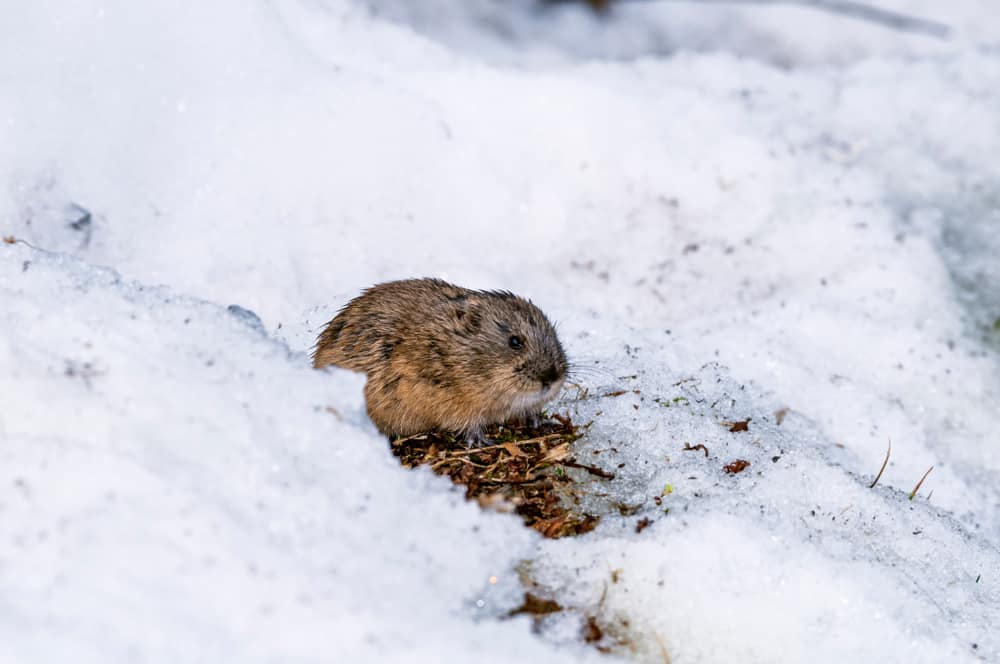
Adorable little rodents, lemmings live around the Arctic Circle.
©Nick Pecker/Shutterstock.com
Lemmings (Lemmus lemmus) are found in the arctic regions of Europe (Norway and Sweden) and Russia. Their thick fur helps retain body heat. In the winter their lighter-colored fur, not only provides camouflage but also absorbs sunlight, which helps keep them toasty. Lemmings also have an extra fat layer, that further protects them from the elements, especially when food is scarce. Lemmings also burrow into the snow to shelter from extreme cold and wind.
Polar Bear
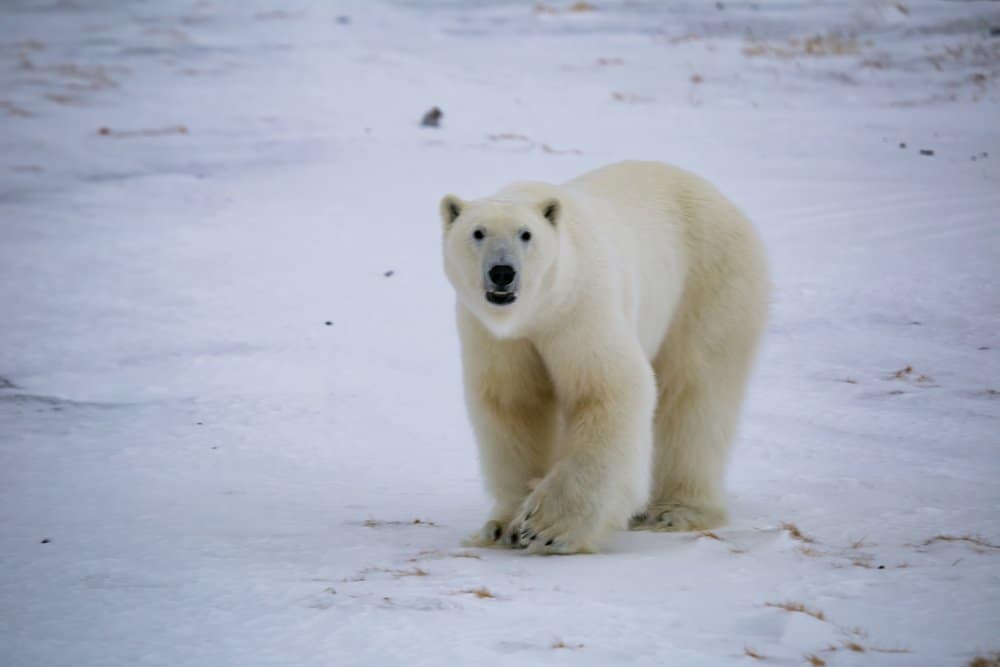
Polar bears are increasingly vunerable to the effects of climate change.
©JoannaPerchaluk/Shutterstock.com
The majority of remaining polar bears (Ursus maritimus) live in Northern Canada with the remaining individuals distributed throughout Greenland, Alaska, Svalbard, and Russia. Adapted to life in the cold, polar bears are large carnivorous mammals with thick, insulating fur and a layer of fat that protect these majestic creatures from the freezing temperatures of their habitat. Polar bears are strong swimmers, whose diet consists mainly of seals. These beautiful beasts are increasingly vulnerable to the effects of climat change on their territory.
Reindeer
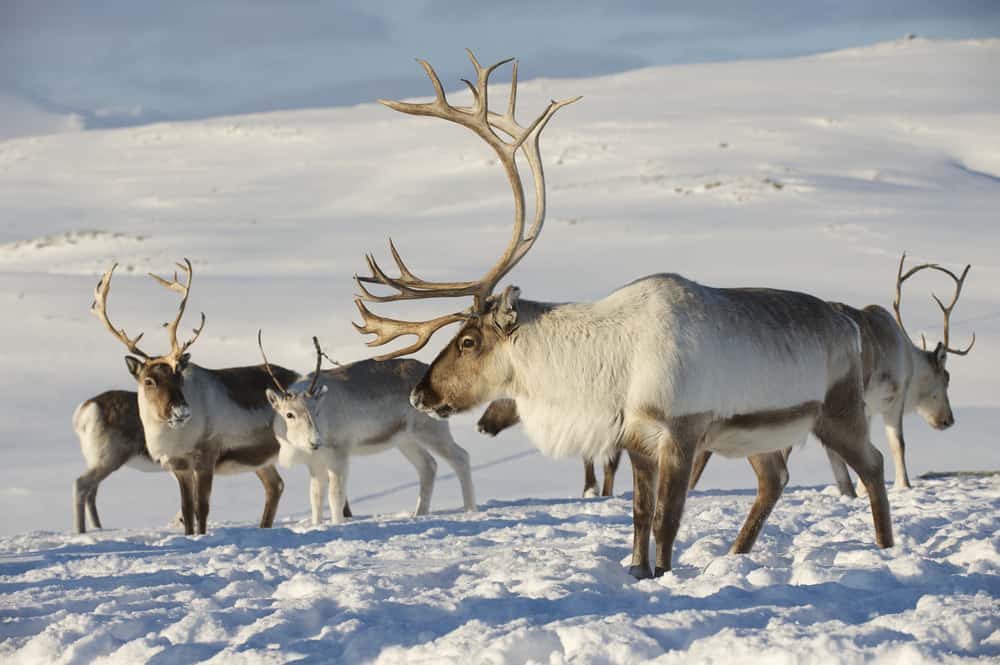
A
reindeer
uses its nose to warm the air it breathes before it enters the lungs.
©Dmitry Chulov/Shutterstock.com
Rangifer Tarandus, known as reindeer or caribou, are larger, herbivorous mammals native to the Arctic. Thir thick fur and hooves are well-adapted to the cold. Ublike other deer species, both male and female reindeer gow antlers. Reindeer live on the open tundra and in forested regions, grazing on the plentiful vegetation that the tundra provides in warmer months, while retreating to the portection of thr forest when it’s snowy.
Snowy Owl
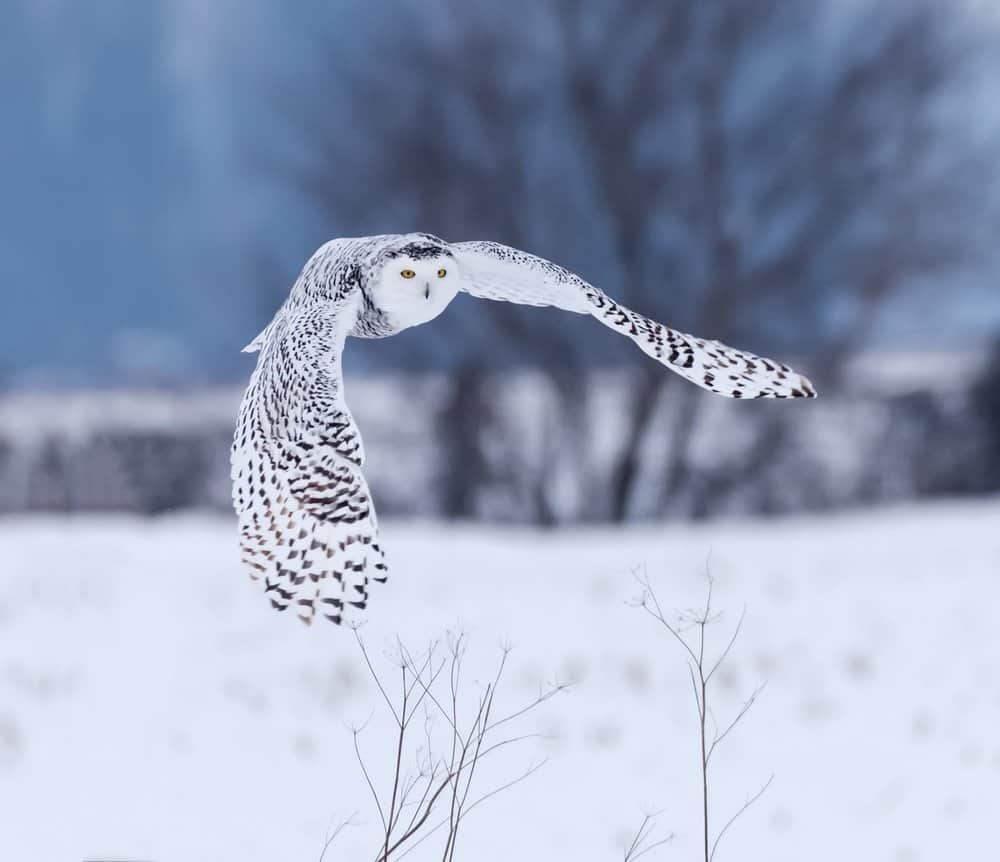
©FotoRequest/Shutterstock.com
Bubo scandiacus, the snowy owl, is admired for its dstinctive white plumage, which allows it to blend into its snow-covered habitat. These large birds of prey feed on small mammals like lemmings. Unlike most owls, snowy owls will hunt during the daytime, especially when food is scarce. Their feet are covered with dense, fluffy feathers to insulate them against the arctic cold. Snowy owls will migrate south in search of food dyring the harshest of winters.
Walrus
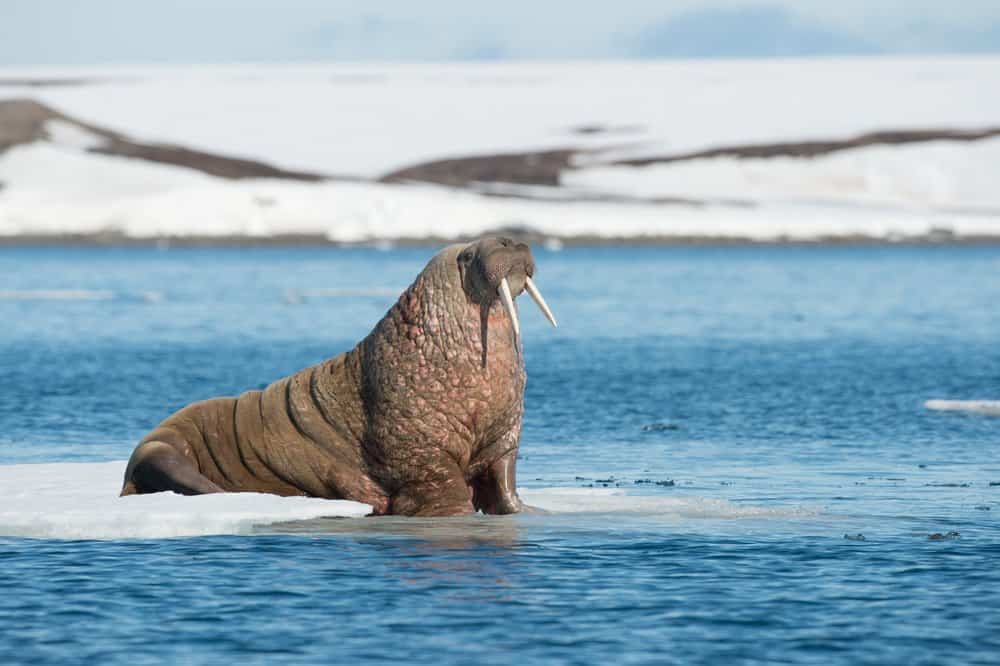
©Inge Jansen/Shutterstock.com
Odobenus rosmarus, the walrus, is a large marine mammal that is well-suited to life in the frigid waters of the Arctic. A thick layer of blubber insulates against the cold while allowing these massive creatures to maintin bouyance. They have large tusks that walruses use for protection, social dominance, mating rituals, breaking ice, and hauling themselves onto ice. Walruses are carnivores who prefer clams, but they will also eat mollusks, mussels, and snails.
The post Surviving Nature’s Freezers: Meet the Animals Thriving in Earth’s Polar Regions appeared first on A-Z Animals.
January 30, 2025 at 11:44PMKathryn Koehler
.jpeg)
.jpeg)

0 Comments